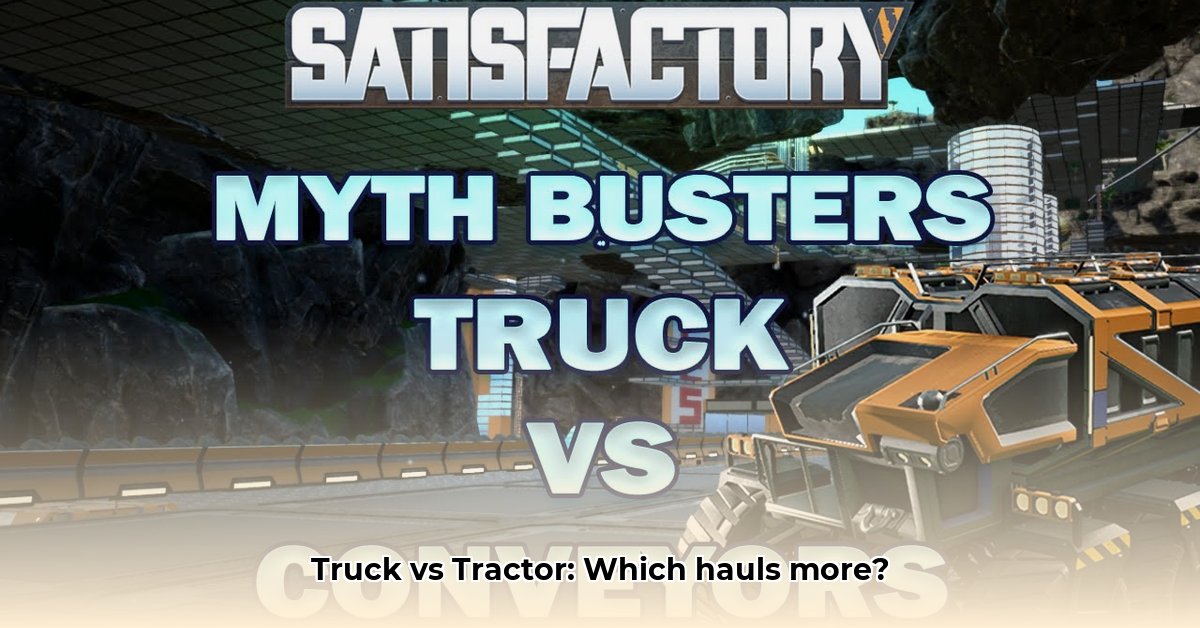
Choosing the right vehicle in Satisfactory is crucial for efficient resource management. The sturdy truck and the nimble tractor offer distinct advantages, making the selection a key strategic decision. This guide compares both vehicles across key factors to help you choose the best option for your factory's needs. For a deeper dive, check out this detailed comparison.
Speed and Handling: A Race to the Factory
Which vehicle is faster? The truck boasts a higher top speed, making it ideal for long-distance hauls. However, the tractor's smaller size and tighter turning radius offer superior maneuverability, especially in tight spaces or challenging terrain. This agility is invaluable when navigating around resource nodes or traversing uneven ground. The truck's speed is unmatched for long stretches, but the tractor’s nimble handling wins in complex environments. Which suits your typical transport routes better?
Payload Power: How Much Can You Haul?
Carrying capacity is a significant factor. Trucks excel here, transporting significantly more resources than tractors. They are perfect for moving large quantities over long distances, acting as heavy-duty haulers. Tractors, with their smaller cargo capacity, are suited for frequent, smaller deliveries, ideal for quick trips to gather and deliver specific resources. What’s the typical size of your cargo loads? This will significantly influence your decision.
Fuel Economy: Keeping Your Engines Running
Fuel efficiency is a crucial concern. Both vehicles consume considerable fuel. However, the tractor tends to be more fuel-efficient on shorter trips due to its lower weight. The truck's fuel consumption increases proportionally with cargo weight, significantly affecting long-haul fuel costs. Consider your typical transport distances and payload to optimize fuel usage. How often will you be refueling?
Cost and Construction: The Price of Progress
Building costs differ significantly. The tractor requires fewer resources and less time to construct, making it an attractive early-game option when resources are limited. Trucks demand a larger initial investment in resources and manufacturing time. This difference in upfront costs should influence your early-game strategy. What are your current resource levels?
Combat Capabilities: Defensive Considerations
Neither vehicle is primarily designed for combat. However, their size and bulk can offer incidental protection. Both can provide unexpected shielding from smaller enemies, but they should not be relied upon as primary defensive units. Remember to utilize your weaponry for dedicated combat situations.
Specific Use Cases: Tailoring Your Choice
Long-haul transport of bulk materials: The truck’s high speed and large carrying capacity make it the ideal choice for moving massive quantities of resources across large distances.
Resource gathering and short-haul transport: The tractor's agility and superior maneuverability make it ideal for transporting resources from nearby nodes efficiently.
Early-game transport: The tractor’s lower resource requirement makes it a better choice during the early stages of the game.
Late-game mass transport: As your factory expands, the truck’s high capacity becomes vital for efficient mass transport to distant facilities or processing centers.
Summary Table: Truck vs. Tractor at a Glance
| Feature | Truck | Tractor |
|---|---|---|
| Speed | High | Lower |
| Maneuverability | Lower | Higher |
| Payload | High | Lower |
| Fuel Efficiency | Lower (increases with load) | Higher (for shorter hauls) |
| Cost | Higher | Lower |
| Ideal Use Case | Long-distance transport, large loads | Resource gathering, short distances |
Ultimately, the optimal choice hinges on your factory's needs and your playstyle. By carefully considering these factors, you can select the vehicle that best complements your resource management strategy. Happy building!